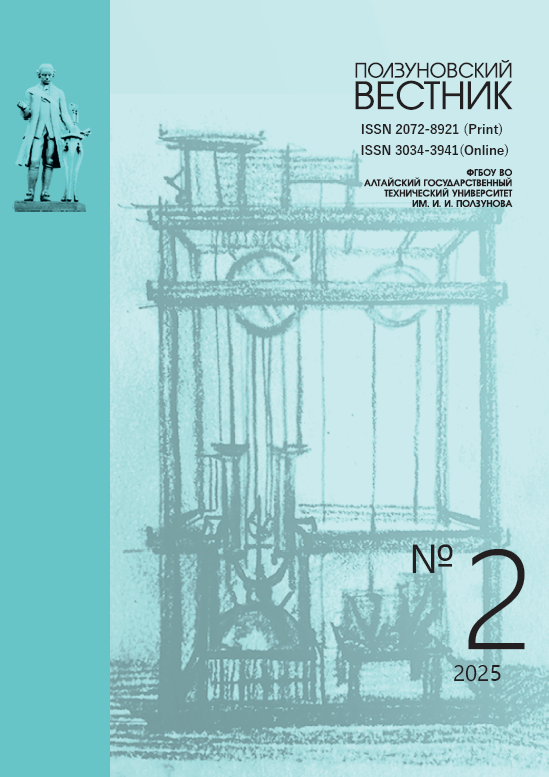STUDY OF LOW PRICE BUTTER SAMPLES FOR SOME QUALITY AND SAFETY INDICATORS
QBDIDJ
DOI:
https://doi.org/10.25712/ASTU.2072-8921.2025.02.005Keywords:
butter, product quality, safety, organoleptic characteristics, fatty acid composition, transisomers, falsificationAbstract
Butter is a food product with a consistently high demand, which is quite easily subject to adulteration. In this regard, close attention is drawn to low-price butter with a cost on the verge of profitability if the manufacturer uses natural cow's milk. A comprehensive study of six samples of butter in the price range from 280 to 500 rubles per 1 kilogram was carried out in order to establish quality and safety indicators. Products of manufacturers from the Republic of Tatarstan and other regions of the Russian Federation were selected for analysis. The absence of residual amounts of organochlorine pesticides (isomers of hexachlorocyclohexane and dichlorodiphenyltrichloroethane and its metabolites), aflatoxin M1, as well as polyketide antibiotics (chlor-, oxy-, tetracycline and doxycycline) within the sensitivity limits of the chromatographic methods used was established in all butter samples. The labeling and packaging were also studied, the organoleptic quality indicators of butter were assessed using a point system and for compliance with the requirements of GOST 32915-2014, and the fatty acid composition was established. According to the organoleptic properties, all the studied samples were identified as "butter". However, during the analysis of the fatty acid composition of the fat phase, it was found that only one sample out of six corresponded to the established values for the composition of milk fat. Two samples are vegetable-cream spreads with a milk fat content of 40.0 and 40.7%. And three samples are vegetable-fat spreads with a complete replacement of milk fat with non-dairy fats.
References
Совершенствование лабораторного контроля сливочного масла / И.Г. Серегин [и др.]. // Вестник РУДН. Серия: Агрономия и животноводство. 2019. Т.14, №2. С. 170-187. doi 10.22363/2312-797X-2019-14-2-170-178
Оценка уровня фальсификации сливочно-го масла, представленного на рынке Республики Казахстан / Ю.А. Синявский [и др.]. // Пищевая промышленность. 2021. №2. С. 25–29. doi 10.24412/0235-2486-2021-2-0013
Веретнова О.Ю., Палаткина П.Д. Анализ микробиологической безопасности сливочного масла региональных производителей // Вестник КрасГАУ. 2022. №4. С. 120–126. doi 10.36718/1819-4036-2022-4-120-126
Сравнительная характеристика качества сливочного масла производителей Оренбургской области / М.В. Дидык [и др.]. // Известия Оренбург-ского государственного аграрного университета. 2022. №5 (97). С. 228–232
Сравнительная ветеринарно-санитарная экспертиза молока разных производителей / В.И. Кляпнев [и др.] // Ветеринарный врач. 2021. № 5. С. 16-24. doi 10.33632/1998-698X.2021-5-16-24.
ГОСТ 32261-2013. Масло сливочное. Тех-нические условия: введ. 2015-07-01. Москва, 2019. 23 с.
ТР ТС 033/2013. Технический регламент Таможенного союза «О безопасности молока и молочной продукции» : принят решением Комис-сии Таможенного союза от 9 октября 2013 года № 67. Москва : Изд-во стандартов, 2013. 192 с.
Павлова Ж.П., Парфенова Т.В. Что мы знаем о сливочном масле? // Вестник ТГЭУ. 2004. №1. С. 101-104.
ГОСТ 30711-2001. Продукты пищевые. Методы выявления и определения содержания афлатоксинов В1 и М1: введ. 2002-07-01. Москва, 2001. 16 с.
ГОСТ 23452-2015. Молоко и молочные продукты. Методы определения остаточных ко-личеств хлорорганических пестицидов: введ. 2016-07-01. Москва, 2016. 17 с.
ГОСТ 31694-2012. Продукты пищевые, продовольственное сырье. Метод определения остаточного содержания антибиотиков тетрацик-линовой группы с помощью высокоэффективной жидкостной хроматографии с масс-спектрометрическим детектором: введ. 2013-07-01. Москва, 2013. 29 с.
ГОСТ 32915-2014. Молоко и молочная продукция. Определение жирнокислотного соста-ва жировой фазы методом газовой хроматогра-фии: введ. 2016-01-01. Москва, 2015. 12 с.
ГОСТ 31754-2012. Масла растительные, жиры животные и продукты их переработки. Ме-тоды определения массовой доли трансизомеров жирных кислот: введ. 2013-07-01. Москва, 2014.
с.
Downloads
Published
How to Cite
Issue
Section
License
Copyright (c) 2025 Konstantin E. Burkin, Aigul G. Mukhammetshina, Aisylu Z. Mukharlyamova, Mariya V. Balymova, Aleksandr M. Saifutdinov, Saniya L. Mokhtarova

This work is licensed under a Creative Commons Attribution 4.0 International License.















 .
. This work is licensed under a
This work is licensed under a 
